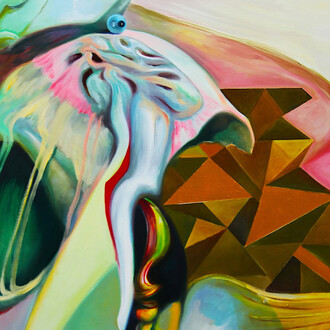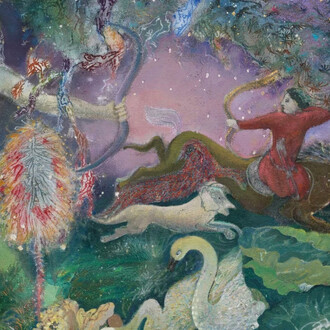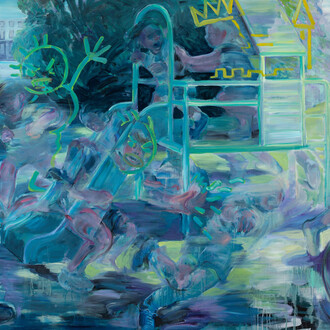Devoted to the art and architecture of medieval Europe. Located in Fort Tryon Park in northern Manhattan, The Cloisters was assembled from architectural elements that date from the twelfth through the fifteenth century.
Located in a spectacular four-acre setting overlooking the Hudson River, the building incorporates elements from five medieval cloisters—Saint-Michel-de-Cuxa, Saint-Guilhem-le-Désert, Bonnefont-en-Comminges, Trie-en-Bigorre, and Froville—and from other monastic sites located in southern France. Three of the cloisters reconstructed at the branch museum feature gardens planted according to horticultural information found in medieval treatises and poetry, garden documents and herbals, and medieval works of art such as tapestries, stained-glass windows, and column capitals. Approximately three thousand works of art from medieval Europe, dating from the ninth to the sixteenth century and including exquisite illuminated manuscripts, stained glass, metalwork, enamels, ivories, and tapestries, are exhibited in this unique context.
The modern museum building is not a copy of any specific medieval structure but an ensemble of spaces, rooms, and gardens that suggest a variety of artistic aspects of medieval Europe.
Much of the sculpture at The Cloisters was acquired by George Grey Barnard (1863–1938), a prominent American sculptor and an avid collector of medieval art. Barnard opened his original cloisters on Fort Washington Avenue to the public in 1914; through the generosity of philanthropist and collector John D. Rockefeller, Jr. (1874–1960), the Museum acquired the cloisters and all of their contents in 1925. By 1927, it was clear that a new, larger building would be needed to display the collection in a more scholarly fashion. In addition to financing the conversion of 66.5 acres of land just north of Barnard’s museum into a public park, which would house the new museum, Rockefeller donated 700 additional acres across the Hudson River to the state of New Jersey to ensure that no developments on the property would spoil the view from The Cloisters. In addition to providing the grounds and building to house the Barnard collection, Rockefeller contributed works of art from his own collection—including the celebrated Unicorn Tapestries—and established an endowment for operations and future acquisitions.
The new Cloisters museum building was designed by Charles Collens (1873–1956), the architect of Riverside Church in New York City, in a composite yet informed medieval style that incorporated elements from Barnard’s museum as well as the Rockefeller works. Joseph Breck (1885–1933), a curator of decorative arts and assistant director of the Metropolitan Museum, and James J. Rorimer (1905–1966), who would later be named the Museum’s director, were primarily responsible for the interior. Balancing Collens’s interpretation with strict attention to historical accuracy, Breck and Rorimer created in the galleries a clear and logical flow from the Romanesque (ca. 1000–ca. 1150) through the Gothic period (ca. 1150–1520). The Cloisters was formally dedicated on May 10, 1938. The Cloisters’ Treasury, which contains objects created for liturgical celebrations, personal devotions, and secular uses, was renovated in 1988. The galleries containing the seven Unicorn Tapestries were refurbished in 1999.
The collection at The Cloisters continues to grow, thanks to Rockefeller’s endowment and other significant gifts. Among its masterpieces are an early fifteenth-century French illuminated book of hours, The Belles Heures of Jean de France, Duc de Berry; a richly carved, twelfth-century ivory cross attributed to the English abbey of Bury Saint Edmunds; stained-glass windows from the castle chapel at Ebreichsdorf, Austria; a stone Virgin of the mid-thirteenth century from the choir screen of Strasbourg Cathedral in France; and the so-called Merode Triptych, representing the Annunciation, by the fifteenth-century Netherlandish master Robert Campin.

















